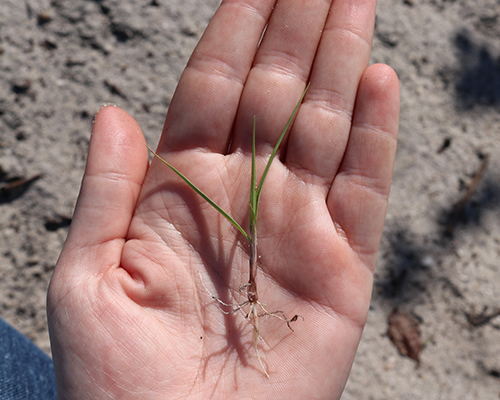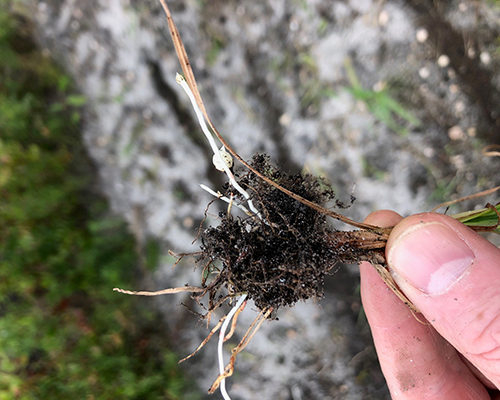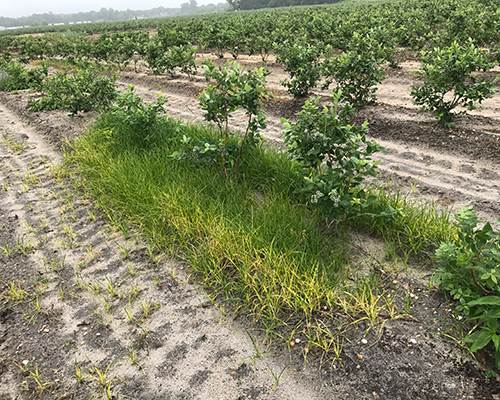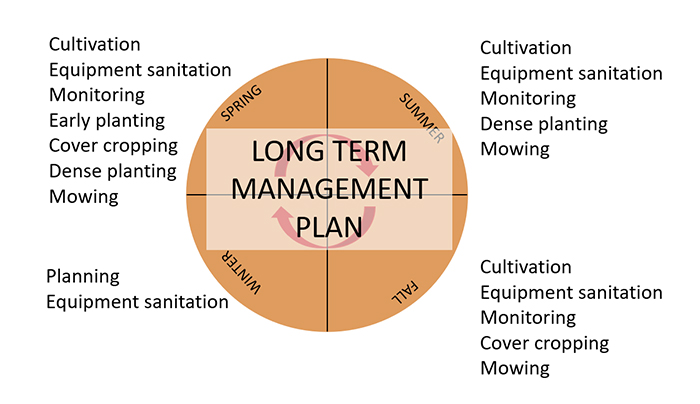Fact Sheet FS1341
Yellow nutsedge (Cyperus esculentus) is a persistent weed commonly found in irrigated production fields, landscapes, and turf. Its sturdy leaves and angled stems are strong enough to puncture plastic and woven mulches. Reproduction through rhizomes and nutlet tubers allows for rapid reproduction and spread throughout fields. Understanding the life cycle and biology of nutsedge are key to figuring out the best options for control in your fields.
Growth Habit
Nutsedge is a grass-like perennial that has three-angled stems, long grass-like leaves, and is yellowish-green in color. Characteristics include:



Management Strategies
Control of nutsedge in production areas can be a multi-year process that involves several strategies for control. Once nutsedge is found on the farm, control measures should be identified and implemented. Organic and no-spray farming operations will need to rely on well-timed cultivation and strategic planting to compete with the weed infestation.
A. Cultivation
B. Competition
Farm Decision Tool
Yellow nutsedge management is a long-term process for farms not relying on herbicides or fumigants. Identification of existing nutsedge populations on the farm and reflection on your activities and how they impact these populations is the first step to developing a management plan. Use the charts below to identify your nutsedge populations, your current management methods, and to develop a plan of action to eradicate nutsedge from production areas.
| Nutsedge Field Locations | |||
|---|---|---|---|
| Field | Size of Population | Suspected Introduction | Future Prevention Plan |
| Example: Field 4 | Patchy throughout | Equipment borrowed | |

Figure 4.
| Field | Current Strategies | Timeframe |
|---|---|---|
| Field 4 | Example: hand weeding | spring |
| Field | Potential Future Strategies | Timeframe |
|---|---|---|
| Field 4 | Clean equipment between fields | Throughout 2022 |
References
- Uva, R., Neal, J., DiTomasso, J. (1997). Weeds of the Northeast. Cornell University Press.
- Mohler, C., Teasdale, J., DeTommaso, A. (2021). Manage Weeds on Your Farm A Guide to Ecological Strategies. USDA Sustainable Agriculture.
- Mohler, C., Johnson, S. (2009). Crop Rotation on Organic Farms. USDA Sustainable Agriculture Research and Education.
May 2022
Copyright © 2024 Rutgers, The State University of New Jersey. All rights reserved.
For more information: njaes.rutgers.edu.
Cooperating Agencies: Rutgers, The State University of New Jersey, U.S. Department of Agriculture, and Boards of County Commissioners. Rutgers Cooperative Extension, a unit of the Rutgers New Jersey Agricultural Experiment Station, is an equal opportunity program provider and employer.

